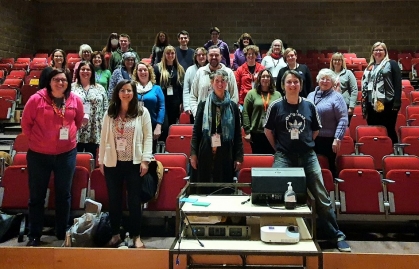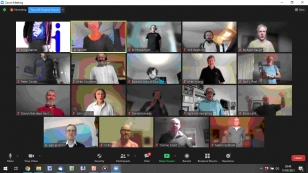 Warm-up pic: with coats, as the room is well-ventilated and it's January!
Warm-up pic: with coats, as the room is well-ventilated and it's January!
Tuesday evening took me to Welwyn Garden City for the first of a series of sessions with Welwyn Harmony working with the chorus and their directing team together. There are all kinds of reasons why this kind of combined approach is useful, beyond the fact that both areas of focus are of value in themselves.
As a learning experience, a double focus gives both director and singers space to digest things, to work with a new idea or technique for a while without direct scrutiny. You actually get more total learning in this way: people are going to need some time to absorb and integrate the input anyway, so you can spend some of that processing time offering input to someone else, who will then have space to do their own processing when you switch focus back.
And seeing other people learn things is itself a powerful learning experience. It’s why putting two quartets in with one coach is a successful model, and why I like to do individual voice coaching with my chorus with two singers at a time. What you learn from doing can be different from what you learn by seeing and hearing others do.






